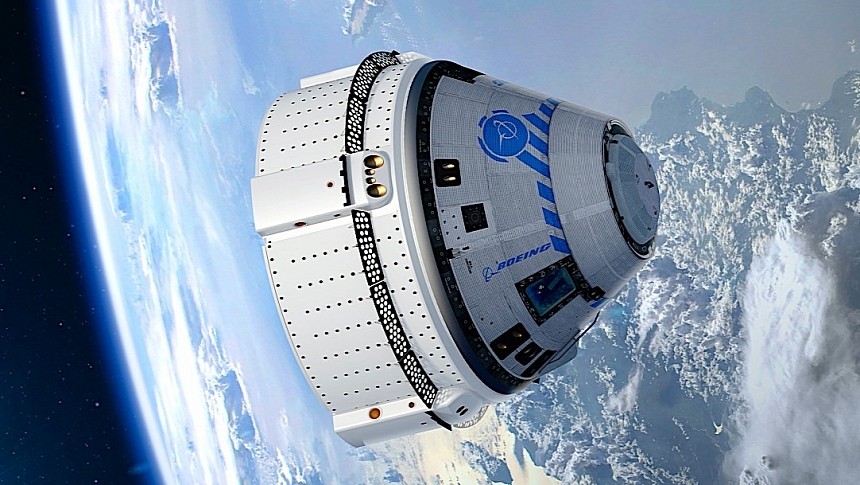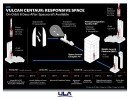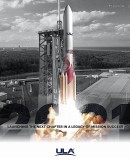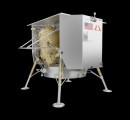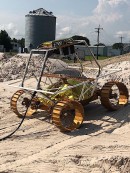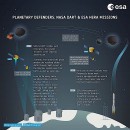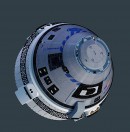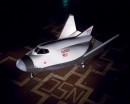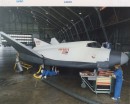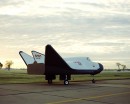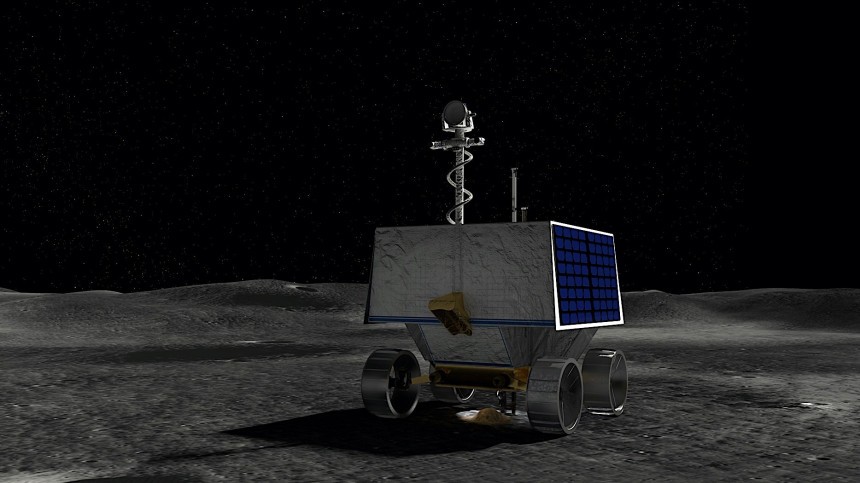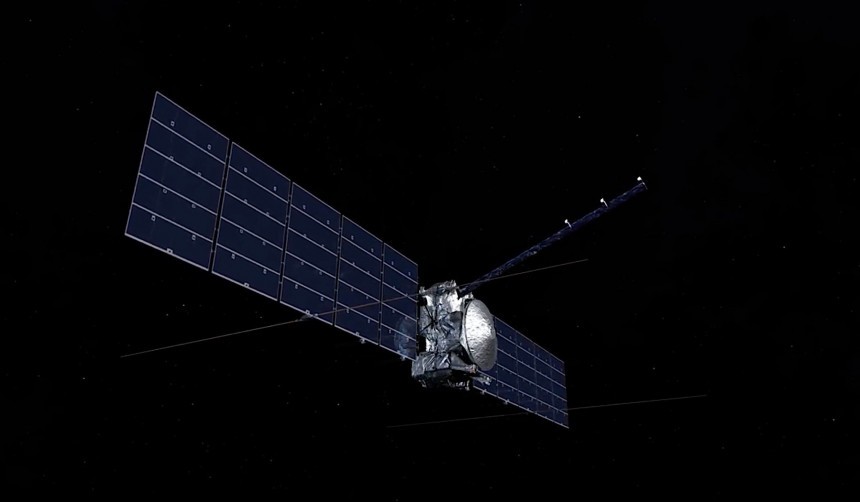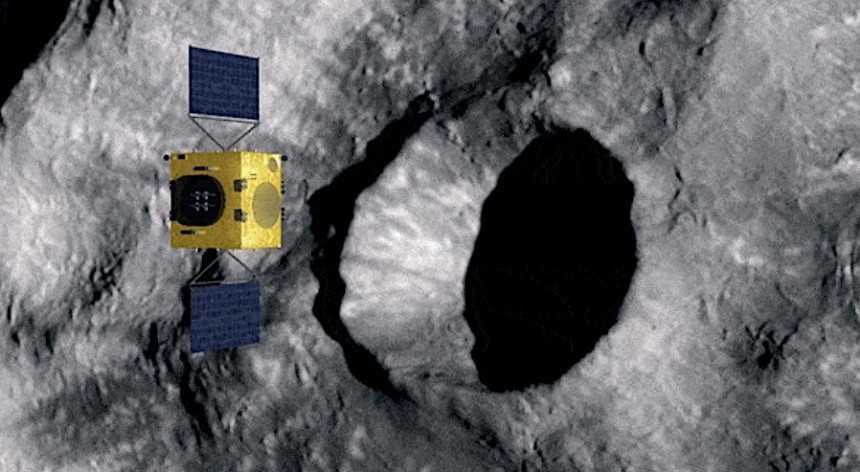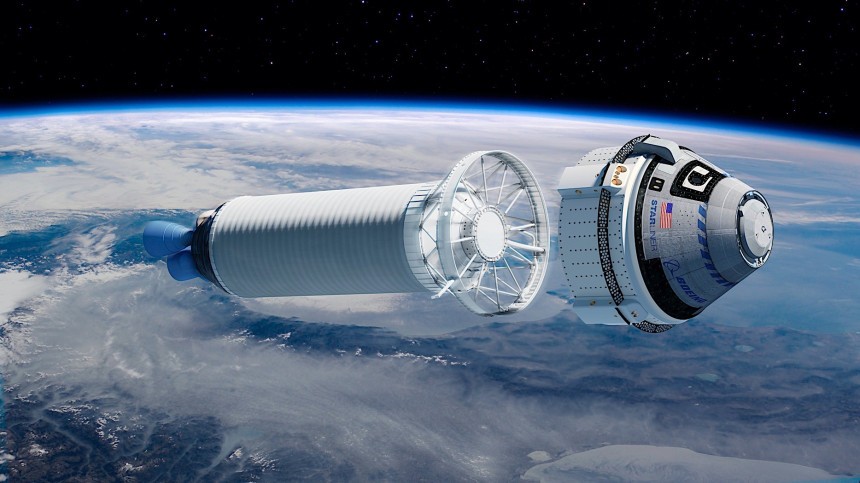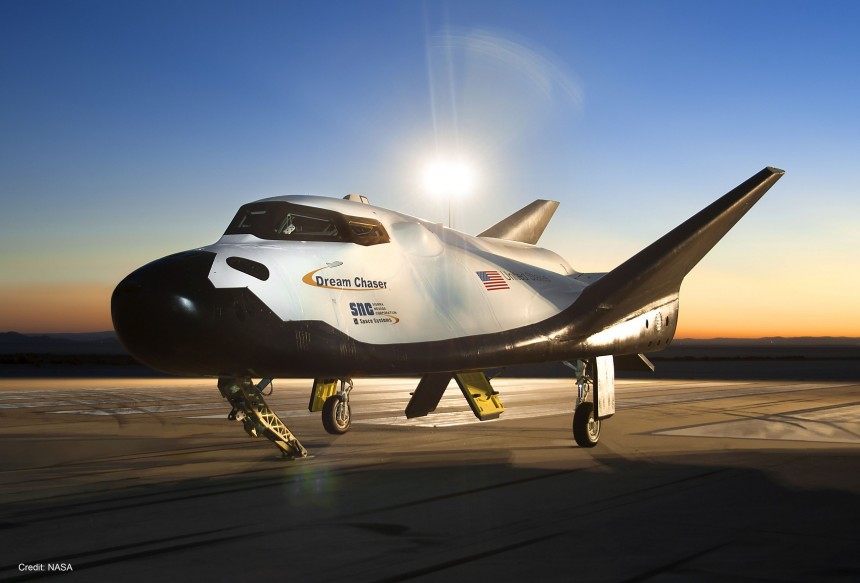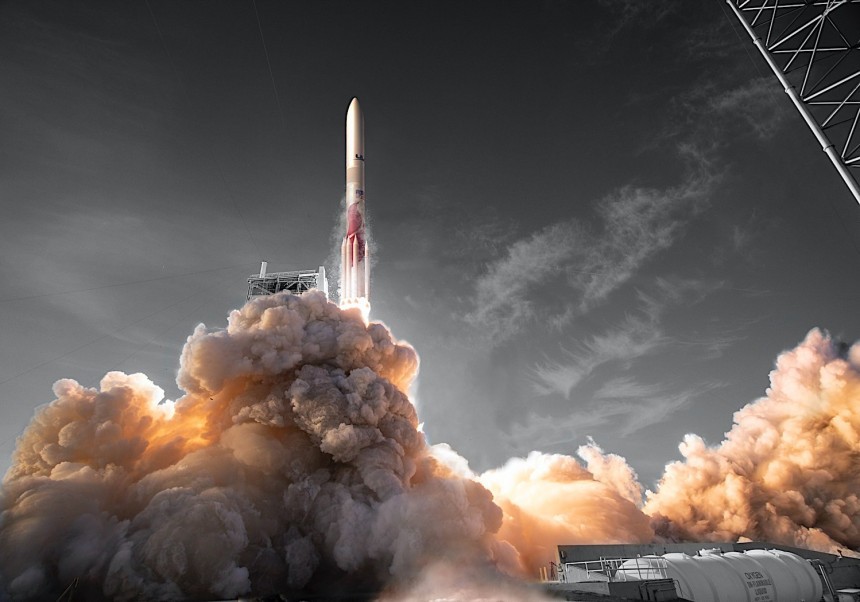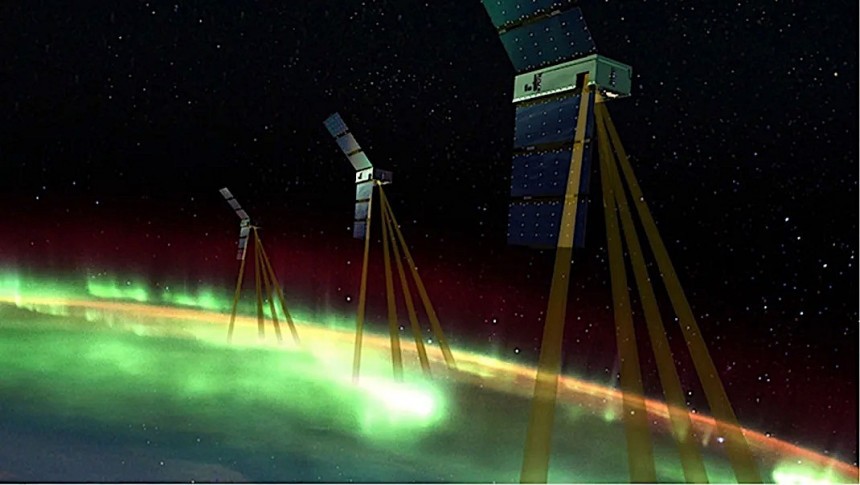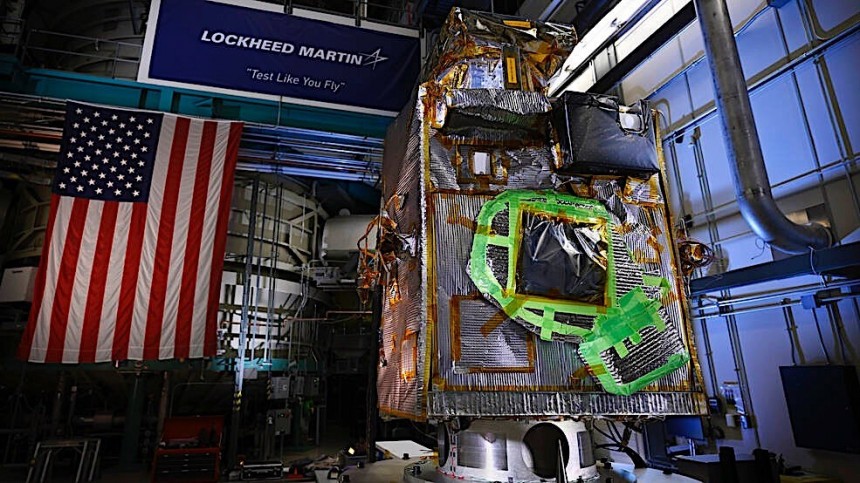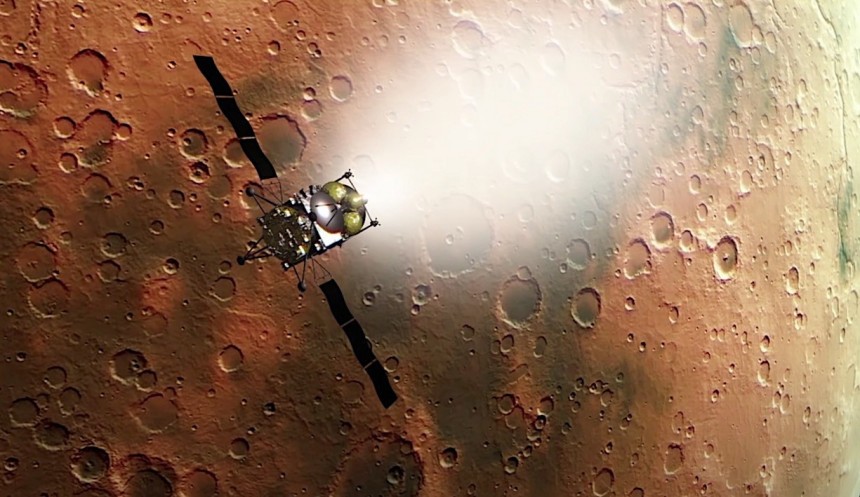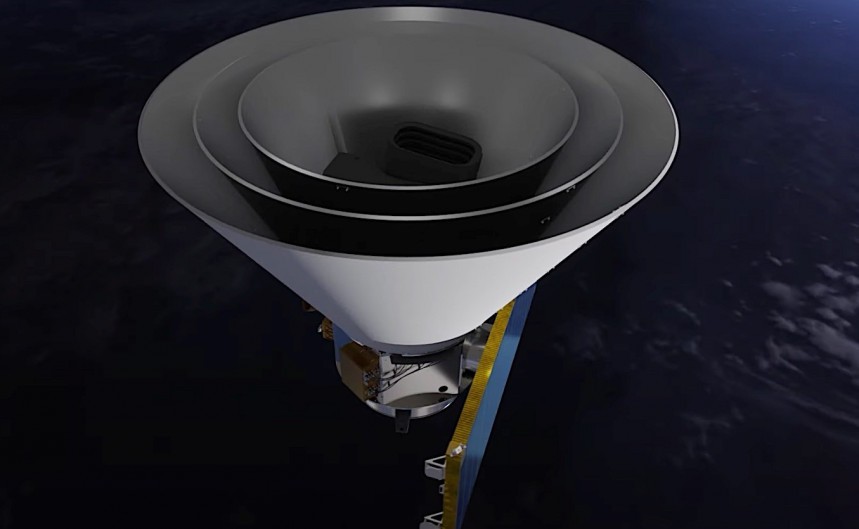The last few years have coalesced into something that can only be described as another golden age for space exploration. With American space agency NASA taking point, humanity's dreams of reaching further and wider into the solar system and even beyond have grown bolder and bolder.
There is no doubt that of all space exploration programs now ongoing the Artemis one is the most daring. Not only because it targets human Moon landings for the first time in decades, but also because it does so using technologies that have never been tried before.
On top of that, Artemis is the stepping stone to two major developments that have been dreamed of by our species for a very long time: the colonization of the Moon, and the first crewed missions to Mars.
To date Artemis has had only one flight, with an empty Orion spacecraft sent to go around the planet's satellite and come back. The second mission of the program, and the first with humans on board, was scheduled to depart and do roughly the same thing this year. The actual Moon landings were expected in 2025.
The complexities of the Artemis mission have however made the 2024 and 2025 launches impossible, and that prompted NASA to announce a delay of roughly one year for both missions (new dates are now 2025 and 2026).
There is no doubt that Artemis II would have been the highlight of the year when it comes to space exploration, and its postponement has left many of us space enthusiasts somewhat disappointed. But 2024 remains, even without this mission, an important year in our history, with a number of exciting pieces of hardware on their way up to various points in space to conduct science and advance our goals.
We tried to bring them all together in this piece and give you a clearer picture of what lies ahead. Many of the projects you'll read about below benefit from NASA's direct involvement, while others are meant to serve its needs more than anyone else's.
The world started the new year with the launch of the first American mission to the Moon in half a century. It was also to be the country's first-ever privately-developed lander to touch down on the Moon.
The mission was called Peregrine 1, and centered around a spacecraft developed by private company Astrobotic. Its mission was simple: study a place that even if it's in plain view every single night, still remains a geological enigma.
Using a wealth of instruments devised specifically for the mission, the Peregrine would have collected data on the lunar radiation environment, would have taken a close look at the composition and surface temperature of the lunar soil and, an essential aspect for the upcoming Artemis missions, would have determined whether there are signs of water in the lunar soil.
The tech took off on January 8 on board a brand new United Launch Alliance rocket called Vulcan Centaur. Shortly after departure a problem with the ship's fuel system cascaded into something that became uncontrollable and eventually killed the mission.
Peregrine 1 was intentionally brought down ten days after launch, and it burned in our planet's atmosphere, above the waters of the South Pacific.
Whereas the Peregrine 1 was America's first-ever privately-developed lander to go for the Moon, the VIPER is NASA's very first robotic lunar rover. That's right, the only agency to have ever landed humans up there, and the only one to have sent several rovers to Mars, never did such a thing for our nightly companion.
VIPER stands for Volatiles Investigating Polar Exploration Rover, and in its name lies its mission: map the resources of the Moon for future exploitation. And by resources I mostly mean water.
The metal box on wheels packs three spectrometers to check the lunar soil for traces of water. It will not only find the stuff (most likely as ice), but also perform some analysis on selected samples.
VIPER is the first vehicle meant to travel to another world that uses an artificial intelligence system to plot its course. The software is called SHERPA, and is there to help "assess risk and optimize decision-making."
The mission of the rover is scheduled to last for 100 days. A SpaceX Falcon Heavy rocket will carry it to space at a date that's yet to be announced, but will surely be before the end of the year.
Europa is one of Jupiter's 95 known moons, and in this respect completely unremarkable. It is however one of the largest in that impressive collection of natural satellites, and, more importantly than that, it almost certainly has a saltwater ocean underneath a crust of ice. And not just any ocean, but one that holds about twice as much water as there is on the entire Earth.
With that assumption comes a near certainty that there might be life up there. A spacecraft called Europa Clipper will be sent there to determine if the place has the right conditions to support life as we know it.
The mission is centered on an orbiter tasked with sampling gas and dust from above the moon's surface. It's the first purpose-made piece of hardware to be sent to Europa, and to be able to complete its task it packs a lot of hardware, including radars, magnetometers, and sensors.
Europa Clipper is one of those missions that will take with it countless human names. About 2.6 million of our peers have submitted their names to be included on a chip that'll go into the orbiter, to spin aimlessly around the Galilean moon after the planned 50 orbits are completed.
Europa Clipper will depart our planet on board a SpaceX Falcon Heavy rocket from the Kennedy Space Center in Florida in October 2024.
Back in 2021, a human-made spacecraft intentionally slammed head-on into an asteroid at speeds of 14,000 mph (22,530 kph) just to see what would happen. Thanks to the many telescopes trained on the impact site, including the James Webb, we got a pretty good sense of what went on. But a special mission was devised to take a closer look.
The projectile spacecraft from 2021 was called DART (Double Asteroid Redirection Test) and its target was the dual asteroid called Didymos - Dimorphos.
The goal of the test was to see if such a method could be used by our species as a defense against dangerous space rocks. As per the data provided by NASA, the impact caused the orbit of the smaller piece of rock (Dimorphos) around the larger one to change by 33 minutes.
To get a better sense of what really transpired there, the European Space Agency devised a mission called Hera. It is based on the carrier spacecraft and two CubeSats called Milani and Juventas.
The CubeSats, ESA's first to be put to work on a space mission, will bombard the asteroid with radar and other instruments to get a clear picture of the damage DART caused.
The Hera mission will lift off on top of a SpaceX Falcon 9 rocket in October 2024, and it is expected to reach its target three years later.
No more than six years ago America was still relying on Russia and its Soyuz rockets and spaceships to get its people to Earth orbit and onto the International Space Station (ISS). And then two companies came along and promised American astronauts would take off from American soil in American spacecraft once more.
The two companies were SpaceX, which promised the Crew Dragon, and Boeing, which put on the table the Starliner. Of them only one kept its word and put the U.S. on the map of crewed launches one more.
Boeing's Starliner spacecraft flew for the first time at about the same time as the Crew Dragon, but it failed to reach the ISS during its test run. It then tried to go again, but the launch was scrubbed for technical issues. That happened in 2021 and since then no other attempt has been made.
This summer, however, NASA and Boeing will have another shot at it, trying to give the space agency more crew transport options to the ISS and back.
The ship will be propped on a United Launch Alliance Atlas V rocket at the Kennedy Space Center and shot to the sky in April of this year.
Not since the retirement of the Space Shuttle in 2011 did America operate a non-military spaceplane. That's because all of the human-rated spaceships made since are simply boring-looking capsules.
That will change possibly as soon as this April, when private company Sierra Space will launch the Dream Chaser as part of an official NASA mission to the International Space Station (ISS).
The spacecraft is an evolution of the HL-20 spacecraft NASA was trying to build back in the 1960s and 1970s. It's a reusable piece of machinery in a lifting-body design and comprising the spaceplane itself and a cargo module called the Shooting Star.
The Dream Chaser itself is reusable and will be able to launch up to 15 times before being scrapped, but the Shooting Star is disposable and will be trashed after each use.
During the first mission scheduled for April 2024, the Dream Chaser will launch on top of a United Launch Alliance (ULA) Vulcan Centaur rocket, the kind that launched the Peregrine in January.
The spaceplane will carry a total of 7,800 pounds (3,500 kg) of cargo, far less than its full capacity of 11,500 pounds (5,200 kg). During its inaugural mission the Dream Chaser will remain attached to the ISS for 45 days before coming back down to Earth.
Despite all those other things currently taking place over at NASA, the American space agency will never forget about Mars, and 2024 too has its share of Red Planet missions. Among them is something called the Escape and Plasma Acceleration and Dynamics Explorers.
That would be EscaPADE for short, a term that covers not one, but two spacecraft, nicknamed Blue and Gold. They are both tasked with studying the magnetosphere of Mars as part of NASA's Small Innovative Missions for Planetary Exploration (SIMPLEx) program.
The transfer of solar wind energy and momentum through the planet's thin atmosphere, as well as how solar wind might have contributed to the place losing the bulk of its atmosphere over the eons are also objects of study for the mission.
The ships are built by Rocket Lab and, leaving aside their scientific purposes, are meant to prove you can still do planetary exploration with low funds.
EscaPADE is scheduled to launch on top of a Blue Origin New Glenn rocket from Cape Canaveral.
The Sun has always been a favorite target for humanity's space exploration programs, and that's understandable considering how everything on this blue marvel owes its existence to the star.
By far the most glamourous recent mission to study the Sun is the Parker Solar Probe, and everything we do after it will pale by comparison. Yet upcoming missions are important too, and they are worth at least a mention here on our list.
Come June 2024, a SmallSat fleet called EZIE will be launched into Earth orbit. Its name is an acronym for Electrojet Zeeman Imaging Explorer, and it's meant to hide a "small mission with a big science return."
The spaceship, comprising a set of three SmallSats, is meant to study the auroral electrojet, electrical currents flowing about 60 to 90 miles above the poles of our world. It is there NASA hopes to find a better understanding of the interaction between Earth and the space weather generated by the Sun.
It's unclear at the time of writing what rocket the EZIE will use to reach orbit.
Water is not only the single most useful substance we're likely to find on the Moon (at least in the immediate future), but also the most important. That's why NASA and other parties involved in space exploration efforts are so focused on it.
Whereas rovers the likes of the VIPER are meant to confirm the detection of water in select places on the Moon's surface, a complete map of its presence up there will definitely help future missions a lot more. And this is where the Lunar Trailblazer comes in.
A satellite by birth, the hardware will launch sometime this year and position itself in an orbit around the Moon. From there, it will try to detect the abundance and distribution of water on the rock. It will do so using a tool called Lunar Thermal Mapper, which is essentially an imaging spectrometer.
Just like the EscaPADE, the Lunar Trailblazer is part of the SIMPLEx program run by NASA. It's unclear what rocket will be used to launch it into space.
One of the most exciting developments in space exploration in recent years is humanity's new-found passion for bringing samples of alien worlds to Earth. Most recently we've seen the Americans do that thanks to the OSIRIS-REx spacecraft, and we'll soon have to brace for the Mars Sample Return mission.
Mars Sample Return will bring back pieces of the Martian surface for humans to study here on Earth, and that is possibly the most exciting space mission of the decade (Artemis III notwithstanding). But another mission, run by the Japanese space agency (JAXA) and backed by NASA and ESA, has something possibly even more exciting up its sleeve.
The mission is called Martian Moons eXploration (MMX), and targets Mars' two moons, Phobos and Deimos. And by target, I mean the spacecraft will reach them, snatch samples from just one of them (Phobos), and head back home. It will pick up samples by stirring the moon's surface using the established technique, by releasing gas from high-pressure nitrogen tanks.
The goal of the mission is to give us a clearer picture of how the two moons came to be. There are two competing theories at this point, one claiming they are captured asteroids and the other that they are bits of Mars itself, thrown into space by a major impact.
MMX will launch sometime this year with the help of a Japanese H3 Launch Vehicle. We expect the spacecraft back, samples in tow, in 2029.
One of the tools to make an attempt is the SPHEREx space observatory. That's its short name, as the long one is (brace for it) Spectro-Photometer for the History of the Universe, Epoch of Reionization and Ices Explorer.
It's a very hard-to-digest name, but like all others in this field of human activity, it hides the telescope's true nature: look at the sky of our Universe in both optical and near-infrared light.
Unlike Webb, which looks at the sky one cosmic target at a time, SPHEREx will absorb in one go and for very short periods of time large portions of the sky.
The piece of tech will thus be capable of scanning 99 percent of the sky every six months. Such an approach will take a toll on the quality of data it snatches, but it will allow it to look so far out and back in time it will observe things that happened in the first second after the Big Bang.
There is no word yet on the carrier rocket for the telescope, and the launch date, although officially set after June 2024, might very well be pushed into 2025.
The above are the most important missions NASA has planned for this year. Several smaller ones (NISAR, PACE, PREFIRE) are meant for the study of our own planet, not some distant world.
You should take all of the above launch dates with a grain of salt. This is space exploration we're talking about, and if history ever taught us anything it is that everything is relative in this business. As weird as that sounds...
On top of that, Artemis is the stepping stone to two major developments that have been dreamed of by our species for a very long time: the colonization of the Moon, and the first crewed missions to Mars.
To date Artemis has had only one flight, with an empty Orion spacecraft sent to go around the planet's satellite and come back. The second mission of the program, and the first with humans on board, was scheduled to depart and do roughly the same thing this year. The actual Moon landings were expected in 2025.
The complexities of the Artemis mission have however made the 2024 and 2025 launches impossible, and that prompted NASA to announce a delay of roughly one year for both missions (new dates are now 2025 and 2026).
There is no doubt that Artemis II would have been the highlight of the year when it comes to space exploration, and its postponement has left many of us space enthusiasts somewhat disappointed. But 2024 remains, even without this mission, an important year in our history, with a number of exciting pieces of hardware on their way up to various points in space to conduct science and advance our goals.
We tried to bring them all together in this piece and give you a clearer picture of what lies ahead. Many of the projects you'll read about below benefit from NASA's direct involvement, while others are meant to serve its needs more than anyone else's.
Peregrine 1 – Moon lander, failed in January 2024
The mission was called Peregrine 1, and centered around a spacecraft developed by private company Astrobotic. Its mission was simple: study a place that even if it's in plain view every single night, still remains a geological enigma.
Using a wealth of instruments devised specifically for the mission, the Peregrine would have collected data on the lunar radiation environment, would have taken a close look at the composition and surface temperature of the lunar soil and, an essential aspect for the upcoming Artemis missions, would have determined whether there are signs of water in the lunar soil.
The tech took off on January 8 on board a brand new United Launch Alliance rocket called Vulcan Centaur. Shortly after departure a problem with the ship's fuel system cascaded into something that became uncontrollable and eventually killed the mission.
Peregrine 1 was intentionally brought down ten days after launch, and it burned in our planet's atmosphere, above the waters of the South Pacific.
Volatiles Investigating Polar Exploration Rover (VIPER) – Moon rover, launch date late 2024
VIPER stands for Volatiles Investigating Polar Exploration Rover, and in its name lies its mission: map the resources of the Moon for future exploitation. And by resources I mostly mean water.
The metal box on wheels packs three spectrometers to check the lunar soil for traces of water. It will not only find the stuff (most likely as ice), but also perform some analysis on selected samples.
VIPER is the first vehicle meant to travel to another world that uses an artificial intelligence system to plot its course. The software is called SHERPA, and is there to help "assess risk and optimize decision-making."
The mission of the rover is scheduled to last for 100 days. A SpaceX Falcon Heavy rocket will carry it to space at a date that's yet to be announced, but will surely be before the end of the year.
Europa Clipper – orbiter, launch date October 2024
With that assumption comes a near certainty that there might be life up there. A spacecraft called Europa Clipper will be sent there to determine if the place has the right conditions to support life as we know it.
The mission is centered on an orbiter tasked with sampling gas and dust from above the moon's surface. It's the first purpose-made piece of hardware to be sent to Europa, and to be able to complete its task it packs a lot of hardware, including radars, magnetometers, and sensors.
Europa Clipper is one of those missions that will take with it countless human names. About 2.6 million of our peers have submitted their names to be included on a chip that'll go into the orbiter, to spin aimlessly around the Galilean moon after the planned 50 orbits are completed.
Europa Clipper will depart our planet on board a SpaceX Falcon Heavy rocket from the Kennedy Space Center in Florida in October 2024.
Hera – orbiter, launch date October 2024
The projectile spacecraft from 2021 was called DART (Double Asteroid Redirection Test) and its target was the dual asteroid called Didymos - Dimorphos.
The goal of the test was to see if such a method could be used by our species as a defense against dangerous space rocks. As per the data provided by NASA, the impact caused the orbit of the smaller piece of rock (Dimorphos) around the larger one to change by 33 minutes.
To get a better sense of what really transpired there, the European Space Agency devised a mission called Hera. It is based on the carrier spacecraft and two CubeSats called Milani and Juventas.
The CubeSats, ESA's first to be put to work on a space mission, will bombard the asteroid with radar and other instruments to get a clear picture of the damage DART caused.
The Hera mission will lift off on top of a SpaceX Falcon 9 rocket in October 2024, and it is expected to reach its target three years later.
Starliner – human-rated spaceship, launch date April 2024
The two companies were SpaceX, which promised the Crew Dragon, and Boeing, which put on the table the Starliner. Of them only one kept its word and put the U.S. on the map of crewed launches one more.
Boeing's Starliner spacecraft flew for the first time at about the same time as the Crew Dragon, but it failed to reach the ISS during its test run. It then tried to go again, but the launch was scrubbed for technical issues. That happened in 2021 and since then no other attempt has been made.
This summer, however, NASA and Boeing will have another shot at it, trying to give the space agency more crew transport options to the ISS and back.
The ship will be propped on a United Launch Alliance Atlas V rocket at the Kennedy Space Center and shot to the sky in April of this year.
Dream Chaser – spaceplane, launch date April 2024
That will change possibly as soon as this April, when private company Sierra Space will launch the Dream Chaser as part of an official NASA mission to the International Space Station (ISS).
The spacecraft is an evolution of the HL-20 spacecraft NASA was trying to build back in the 1960s and 1970s. It's a reusable piece of machinery in a lifting-body design and comprising the spaceplane itself and a cargo module called the Shooting Star.
The Dream Chaser itself is reusable and will be able to launch up to 15 times before being scrapped, but the Shooting Star is disposable and will be trashed after each use.
During the first mission scheduled for April 2024, the Dream Chaser will launch on top of a United Launch Alliance (ULA) Vulcan Centaur rocket, the kind that launched the Peregrine in January.
The spaceplane will carry a total of 7,800 pounds (3,500 kg) of cargo, far less than its full capacity of 11,500 pounds (5,200 kg). During its inaugural mission the Dream Chaser will remain attached to the ISS for 45 days before coming back down to Earth.
Escape and Plasma Acceleration and Dynamics Explorers (EscaPADE) – orbiter, launch date August 2024
That would be EscaPADE for short, a term that covers not one, but two spacecraft, nicknamed Blue and Gold. They are both tasked with studying the magnetosphere of Mars as part of NASA's Small Innovative Missions for Planetary Exploration (SIMPLEx) program.
The transfer of solar wind energy and momentum through the planet's thin atmosphere, as well as how solar wind might have contributed to the place losing the bulk of its atmosphere over the eons are also objects of study for the mission.
The ships are built by Rocket Lab and, leaving aside their scientific purposes, are meant to prove you can still do planetary exploration with low funds.
EscaPADE is scheduled to launch on top of a Blue Origin New Glenn rocket from Cape Canaveral.
Electrojet Zeeman Imaging Explorer (EZIE) – orbiter, launch date June 2024
By far the most glamourous recent mission to study the Sun is the Parker Solar Probe, and everything we do after it will pale by comparison. Yet upcoming missions are important too, and they are worth at least a mention here on our list.
Come June 2024, a SmallSat fleet called EZIE will be launched into Earth orbit. Its name is an acronym for Electrojet Zeeman Imaging Explorer, and it's meant to hide a "small mission with a big science return."
The spaceship, comprising a set of three SmallSats, is meant to study the auroral electrojet, electrical currents flowing about 60 to 90 miles above the poles of our world. It is there NASA hopes to find a better understanding of the interaction between Earth and the space weather generated by the Sun.
It's unclear at the time of writing what rocket the EZIE will use to reach orbit.
Lunar Trailblazer – orbiter, launch date 2024
Whereas rovers the likes of the VIPER are meant to confirm the detection of water in select places on the Moon's surface, a complete map of its presence up there will definitely help future missions a lot more. And this is where the Lunar Trailblazer comes in.
A satellite by birth, the hardware will launch sometime this year and position itself in an orbit around the Moon. From there, it will try to detect the abundance and distribution of water on the rock. It will do so using a tool called Lunar Thermal Mapper, which is essentially an imaging spectrometer.
Just like the EscaPADE, the Lunar Trailblazer is part of the SIMPLEx program run by NASA. It's unclear what rocket will be used to launch it into space.
Martian Moons eXploration (MMX) – sampler, launch date 2024
Mars Sample Return will bring back pieces of the Martian surface for humans to study here on Earth, and that is possibly the most exciting space mission of the decade (Artemis III notwithstanding). But another mission, run by the Japanese space agency (JAXA) and backed by NASA and ESA, has something possibly even more exciting up its sleeve.
The mission is called Martian Moons eXploration (MMX), and targets Mars' two moons, Phobos and Deimos. And by target, I mean the spacecraft will reach them, snatch samples from just one of them (Phobos), and head back home. It will pick up samples by stirring the moon's surface using the established technique, by releasing gas from high-pressure nitrogen tanks.
The goal of the mission is to give us a clearer picture of how the two moons came to be. There are two competing theories at this point, one claiming they are captured asteroids and the other that they are bits of Mars itself, thrown into space by a major impact.
MMX will launch sometime this year with the help of a Japanese H3 Launch Vehicle. We expect the spacecraft back, samples in tow, in 2029.
SPHEREx – telescope, launch date after June 2024
When NASA finally launched the James Webb Telescope a couple of years ago it set new standards to beat for this kind of space hardware. And there are standards that will prove very hard to beat, even if other, similar gear will try to do that.One of the tools to make an attempt is the SPHEREx space observatory. That's its short name, as the long one is (brace for it) Spectro-Photometer for the History of the Universe, Epoch of Reionization and Ices Explorer.
It's a very hard-to-digest name, but like all others in this field of human activity, it hides the telescope's true nature: look at the sky of our Universe in both optical and near-infrared light.
Unlike Webb, which looks at the sky one cosmic target at a time, SPHEREx will absorb in one go and for very short periods of time large portions of the sky.
The piece of tech will thus be capable of scanning 99 percent of the sky every six months. Such an approach will take a toll on the quality of data it snatches, but it will allow it to look so far out and back in time it will observe things that happened in the first second after the Big Bang.
There is no word yet on the carrier rocket for the telescope, and the launch date, although officially set after June 2024, might very well be pushed into 2025.
The above are the most important missions NASA has planned for this year. Several smaller ones (NISAR, PACE, PREFIRE) are meant for the study of our own planet, not some distant world.
You should take all of the above launch dates with a grain of salt. This is space exploration we're talking about, and if history ever taught us anything it is that everything is relative in this business. As weird as that sounds...
